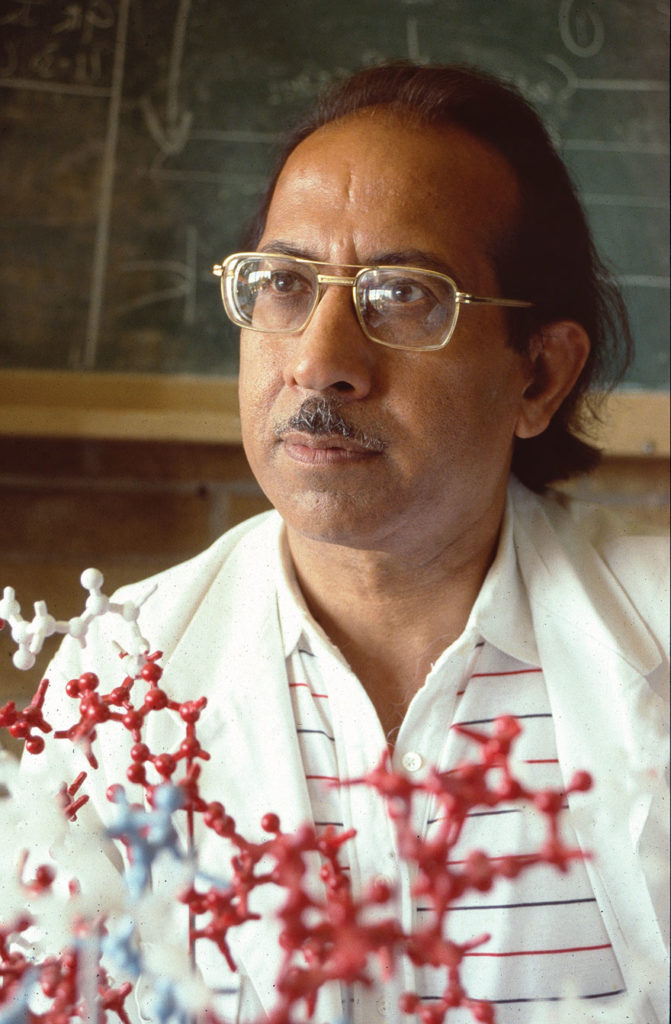Organizations:
People:
Topics:
Synthesizing insulin in Canada
Rebecca MelvilleJuly 18, 2017
This article is from the July 2017 issue of Canadian Innovation News. You can read the full issue here.
Some of the world’s 415 million diabetics could not take Drs. Frederick Banting and Charles Best’s animal-derived insulin. Another version was essential.
By Jassi Bedi
Synthesized insulin is a hormone used by 300 million people around the world to treat diseases like diabetes. But few people know that it was first synthesized in our nation’s capital by the late Indo-Canadian scientist, Dr. Saran Narang.
To do this, Narang and his team at the National Research Council (NRC) used a process called recombinant DNA. DNA is a complex molecule that serves as instructions for cells to create proteins in an organism. Since all life is composed of proteins, DNA acts as blueprints for every living thing on Earth.
 The NRC’s Dr. Saran Narang is credited with the invention of synthetic insulin, which resulted in the drug Humulin, now used by approximately 300 million people worldwide.
The NRC’s Dr. Saran Narang is credited with the invention of synthetic insulin, which resulted in the drug Humulin, now used by approximately 300 million people worldwide.The NRC’s Dr. Saran Narang is credited with the invention of synthetic insulin, which resulted in the drug Humulin, now used by approximately 300 million people worldwide.
Recombinant DNA is a process by which two different strands of DNA are combined to create a new strand with the properties of both. This new strand can then be transplanted into a bacterium to essentially trick it into making whatever the scientists that engineered it desire. In the case of Narang and his team, their goal was to get the bacterium to create insulin – and they succeeded. Some of the world’s 415 million diabetics could not take Drs. Frederick Banting and Charles Best’s animal-derived insulin. Another version was essential.
In 1981 insulin was created in an Ottawa laboratory to benefit millions of people across the globe. Of course, insulin was always available before then. The problem was that it would be taken from animals. Most of the time the insulin was taken from pigs. About 15% of diabetics at the time were allergic to pigs so many people were left with limited treatment.
Narang and his colleagues were able to bring insulin to the masses by removing the use of animals entirely, by their creation of artificial insulin through recombinant DNA. The synthetization of insulin eventually led to the creation of Humulin, a product that delivers doses of insulin from a pen.

This article is from the July 2017 issue of Canadian Innovation News. You can read the full issue here.
Events For Leaders in
Science, Tech, Innovation, and Policy
Discuss and learn from those in the know at our virtual and in-person events.
See Upcoming Events
By using this website, you agree to our use of cookies. We use cookies to provide you with a great experience and to help our website run effectively in accordance with our Privacy Policy and Terms of Service.




